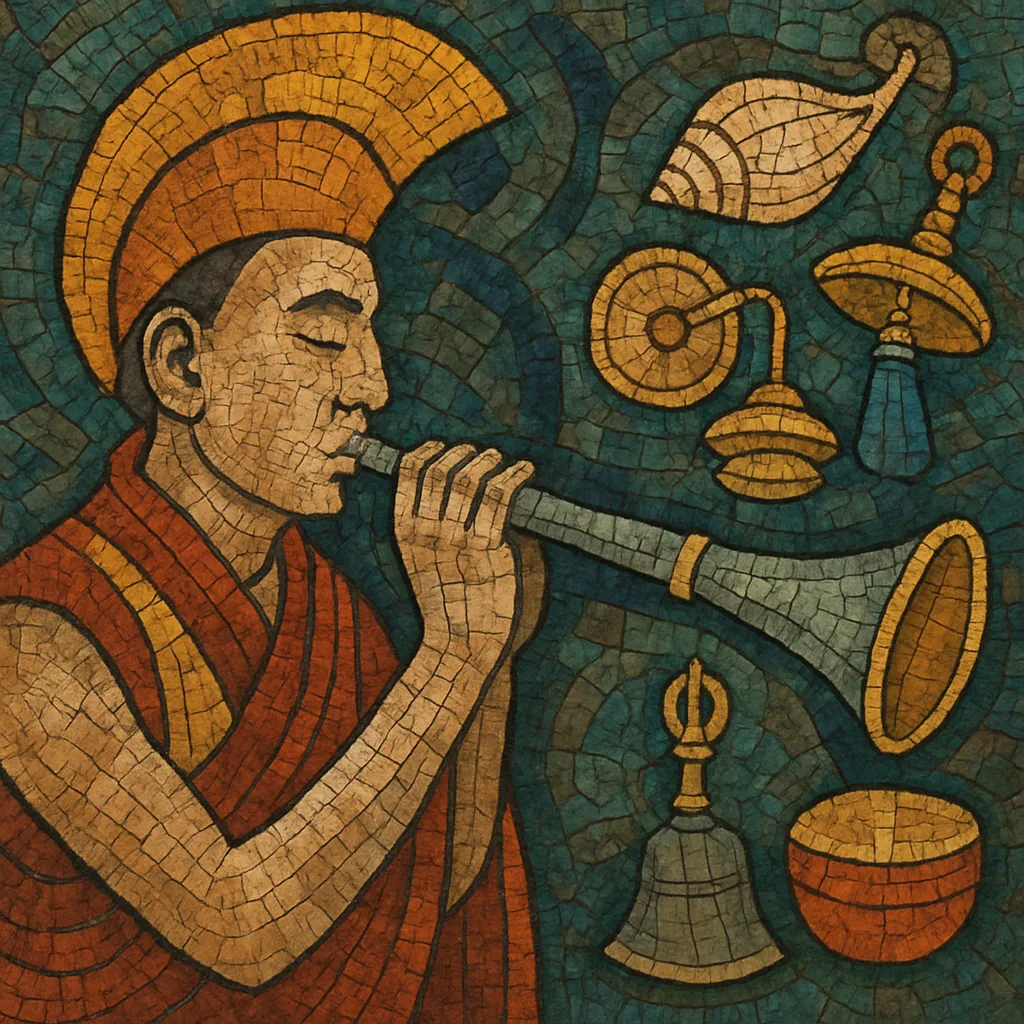Tibetan Buddhist chant is a liturgical vocal tradition used in monasteries and temples across the Tibetan cultural sphere. Its most recognizable sound is the exceptionally low, overtone-rich "chordal" chanting practiced by tantric colleges, in which monks produce a fundamental tone with audible subharmonics to create a multi-tone effect.
The chant accompanies ritual cycles, recitation of sutras and tantras, and the repetition of mantras such as "Om Mani Padme Hum." It is often framed by ritual instruments—long horns (dungchen), double-reed oboes (gyaling), conch shells (dungkar), thighbone trumpets (kangling), cymbals (rolmo, silnyen), hand drums (damaru), frame drums (nga), and bells (drilbu)—that cue sections, signal deities, and shape the ritual flow. Melodically, the style favors sustained tones, narrow-range formulae, and modal inflections; rhythm is breath-governed and leader-choir responsorial rather than strictly metrical.
Beyond its sonic qualities, the chant is a contemplative practice: texts and seed syllables are vocalized with the aim of stabilizing attention, invoking enlightened qualities, and enacting visualization practices central to Vajrayana Buddhism.
Tibetan Buddhist chant emerged as Buddhism took root in Tibet during the Tibetan Empire, especially under kings Songtsen Gampo and Trisong Detsen. With the establishment of Samye Monastery in the late 8th century, Indian Buddhist monastic recitation practices and mantra traditions were transmitted to Tibet, where they were adapted into Tibetan language and ritual frameworks.
Over subsequent centuries, scholastic and tantric colleges systematized chant for sutra recitation, tantric sādhanā, and large communal puja. The Gelug tantric colleges—Gyuto (f. 1474) and Gyume—became renowned for their ultra-low, subharmonic “overtone” style (often called gyuke), while Kagyu, Nyingma, Sakya, and Gelug monasteries maintained distinct repertoires, melodic formulae, and performance roles (with the umdzé/chant leader directing responsorial sections). Notation systems such as yang yig helped standardize melodic contours and cadential formulas within each lineage.
Ritual wind, brass, percussion, and bells were integrated to demarcate sections, invoke deities, and coordinate choirs. The sound ideal emphasizes sustained drones, solemn pacing, and timbral depth over harmonic progression, supporting visualization and mantra recitation central to Vajrayana practice.
Following the 1950s Tibetan diaspora, monastic communities reestablished in India and Nepal and began touring and recording. Albums by the Gyuto and Gyume monks, Drepung Loseling, Namgyal, and other ensembles introduced Tibetan chant to global audiences. In 2004, “Sacred Tibetan Chant: The Monks of Sherab Ling Monastery” received a Grammy, underscoring worldwide recognition. The chant’s timbre and contemplative pacing influenced new age, ambient, and ritual ambient scenes, while remaining a living liturgical practice in monasteries and lay communities.


